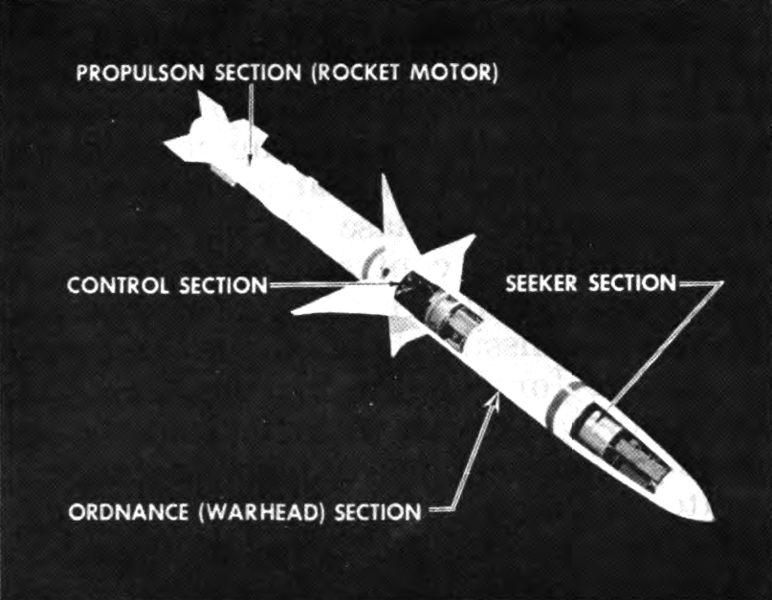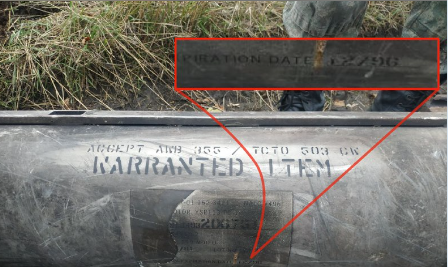Russian state-owned media has published reports that a U.S. AGM-88 HARM (High-Speed Anti-Radiation Missile) was found near Donetsk after apparently failing to engage its target and falling to the Earth.
An AGM-88 HARM shows for reference, the video does indeed show the rocket motor section, with the tailfins broken off, as well as the warhead and seeker sections broke off.

The video purports to show the motor section of the HARM, still intact, with a warranty expiration date of 12/96, about 26 years ago. The report then went on to disparage the military aid the U.S. provides to Ukraine. The United States only recognized that it sent HARMs to Ukraine in August after Russian sources published pictures of a tailfin of one of the missiles. The Ukrainians have put these missiles to good use not only as a weapon but also as a sensor. By utilizing crude interfaces with onboard tablets, the Ukrainians have been able to use the seeker head of the HARMs in order to detect illumination by Russian radars without having to carry their own sensor pods, thus freeing up another pylon for more munitions. However, the Ukrainians, like other former-Soviet bloc air forces, have had issues integrating the missiles with their aircraft that were never designed to fire HARM. As of writing this publication, only Ukrainian MiG-29s were seen flying with them.
As for the expiration date. it is worth noting that the AGM-88 HARM uses a solid propellant for propulsion, which if stored properly, can operate efficiently decades after the typical five-year shelf life of such munitions. In this case, the Russian outlet purported that the missile probably failed to lock and self-destructed. That theory is not entirely unfounded considering the motor section was detached from the control section, warhead, and seeker.

An AGM-88 HARM and other anti-radiation missiles acquire a target using passive radar homing which simply “listens” for RADAR emissions. The AGM-88 however was outfitted with significant improvements over legacy HARMs by taking advantage of an Inertial Navigation System (INS) and millimeter-wave radar for terminal guidance. Before these improvements, a HARM could be easily fooled by an adversary emitter by simply “turning off”, in which case the HARM could no longer “see” and simply fly to the last known signature or fall to the Earth.
However, INS allows a missile to know where it currently is on the Earth using GPS, at the time of the loss of signal, then more accurately fly to the previously detected location, with a much lower degree of error. Millimeter-wave radar allows the AGM-88 to “chirp” a short-wavelength electromagnetic pulse and listen for the reflection of the enemy emitter if it turns off, amounting to a simple active radar construct. However, none of these advanced sensors seem to have survived the crash

